Compiled based on a presented by Wang Gang, representing the Autonomous Driving Laboratory of the Alibaba DAMO Academy and the Cainiao Network E.T. Logistics Laboratory.
Autonomous driving potentially could have a very large market size and social impact in the future, but there several technical difficulties and challenges that must be overcome before this can be made a reality.
Alibaba sees autonomous driving as being an important part of its logistics solutions in the future. In the process of realizing this vision, Alibaba is investing deeply in the research and development of this technology through a proprietary solution that leverages the computing capabilities of Alibaba Cloud and research at Alibaba DAMO Academy.
The topic of autonomous driving has grown significantly in recent years, with autonomous driving becoming as much of a hot topic as AR/VR and 5G. Before we can discuss research and development in this area, and how Alibaba Cloud is working towards developing new autonomous driving technologies, it is important to first arrive at a common understand of what autonomous driving is and what exactly it does.
Before we can discuss what developments and strides are being made in the area of autonomous driving, it's important that we are all on the same page. Nowadays several different terms are used in discussions about this topic. The three most common ones are self-driving, autonomous driving, and intelligent driving, but what do they mean?
There are a few conclusions we can draw from these definitions. First, the terms self-driving and autonomous driving do have some overlap, but where the two differ is that self-driving emphasizes the fact that there is no need for human control over the motor vehicle whatsoever, whereas autonomous driving may to some extent involve a human in some way or another, as we will discuss further below. Last, intelligent driving is in many ways an umbrella term that includes autonomous driving, self-driving, and other technology-assisted driving technologies. But, where autonomous driving and intelligent driving differ is that intelligent driving specifically refers to the use of technologies to assist or replace drivers at certain stages or the driving experience or to optimize aspects of the driving process.
In general, the term autonomous driving is the most representative of this field and the ultimate goal of related research. To build a better understanding of what exactly is autonomous driving, we can classify different levels of autonomy and what that means in terms of the necessary technology. To this end, the SAE proposed what is now the generally accepted classification scheme for the five levels of autonomous driving.
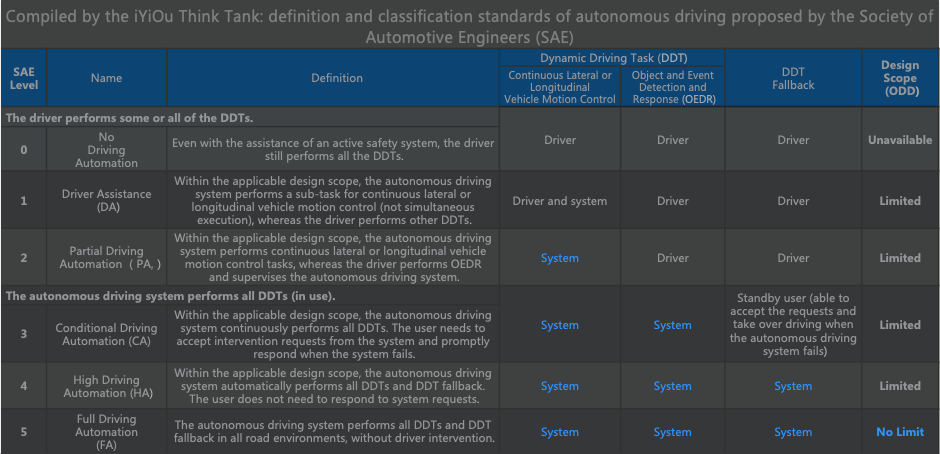
The different levels of autonomous driving also relate to how autonomous driving fundamentally works. This can also be conceptualized as the transferring of different aspects of the driving experience, or more specifically human control over the various mechanisms involved in driving to an automated system.
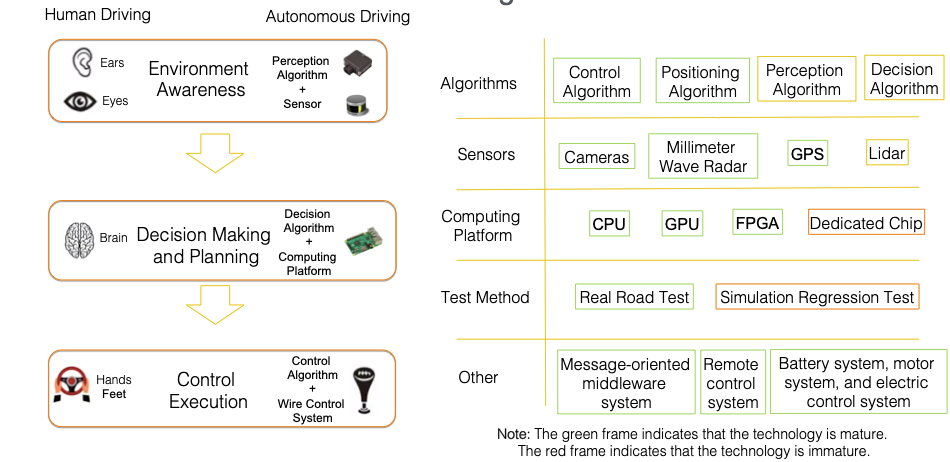
As shown in the figure above, autonomous driving works by creating an autonomous system that can realize all of the functions and responsibilities of a human driver. For instance, the driver's environmental awareness can be transferred to sensors and perception algorithms, which effectively work as the driver's eyes and ears. Sensors used for this application include cameras, GPS, millimeter wave radar, and laser sensor systems, or Lidar. Next, the driver's mental attention in the driving experience, including the driver's decision making and planning can be imitated with decision algorithms that is implemented on a specialized computing platform that usually will have a dedicated chip, such as an AI accelerator or neural processor. Last, the driver's physical control over the vehicle by their hands and feet can be replicated through a system of a control algorithm that is connected to a physical wire control system. In summary these are the technical means by which autonomous driving can be implemented to take control over the mechanisms originally completed solely by a human driver.
There is a lot of potential in the field of autonomous driving, but there are still many road bumps ahead. Currently, only the first two levels of autonomous driving, described in the previous section, have shown much success and have been implemented in the auto industry at a large scale. However, for higher levels of autonomous driving, development has been slow given the vast challenges involved with its research, from the various driving environments that need to be taken into consideration to all of the diverse settings and scenarios involved in driving.
Currently, there are two very different research and development routes for autonomous driving in the industry, which are gradual development and one-step development. Gradual development is mainly adopted by automobile enterprises, which aim to gradually improve the autonomous driving capabilities of their motor vehicle offerings while maintaining their current revenue streams. Gradual development complies with the progress of regulatory requirements for autonomous driving in the real world and the gradual acceptance of innovation on the part of consumers.
One-step development, on the other hand, is mainly adopted by tech enterprises and start-ups. These enterprises do not have to worry about adapting existing products to the technology and have a strong drive to innovate and adopt cutting-edge technologies. This approach attempts to directly take a leading position in technology and grasp the core advantages of self-driving.
In other words, different enterprises choose different technical solutions for sensors and decision algorithms. This is due to the technological immaturity in subfields and the overall development strategies of enterprises in this industry varies greatly, with no clear standard. A mature technical development route has yet to emerge, with different technology routes developing concurrently. The radical or conservative routes chosen by different enterprises are always based on the advantages and existing strategies of these enterprises.
There is still much room for future development in the autonomous driving space, but for the higher levels of autonomous driving, several factors still have to come into place, including the standardization of algorithms and other related technologies.
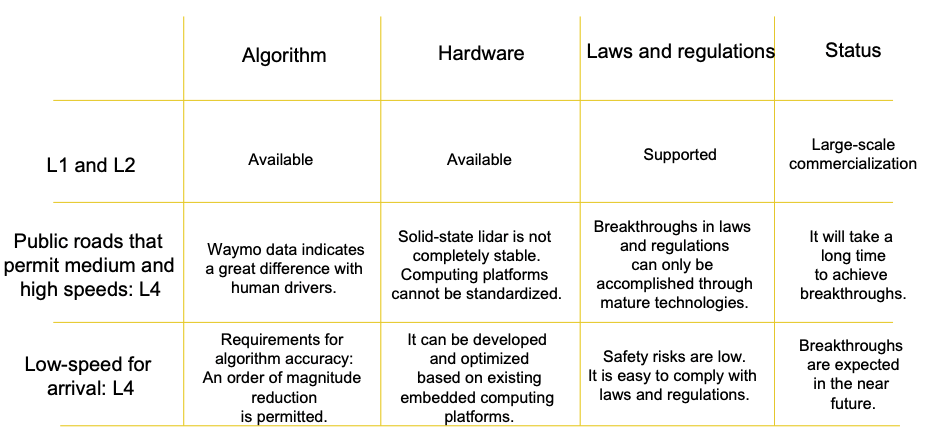
Part of this challenge is that driving naturally involves a large set of scenarios, behavior, and driving environments. For instance, driving environments include high-speed travel over highways, in-town driving, and driving in rural locations, as well as several specific settings such as roundabouts. Moreover, environmental factors that can also severely impact driving include weather events and time of day. All of these scenarios must be taken into account to successfully develop an autonomous driving system.
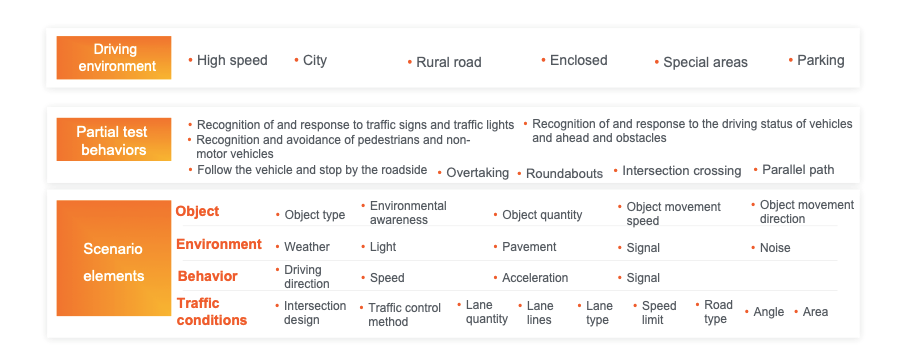
In other words, all of these factors, scenarios, as well as the several different behaviors that have to be included in the development of an autonomous driving system serve as some major roadblocks to developing more mature autonomous systems.
Alibaba sees autonomous driving as an important development for its logistics hubs, with autonomous driving allowing for a more efficient, cost-effective solution to its current logistics infrastructure. To realize this vision, Alibaba has been proactively researching and developing autonomous research and development solution that address specific driving scenarios and is building a platform with a refined scenarios database that offers a high level of data granularity.
Alibaba consider autonomous driving as the next wave of improved efficiency and cost effectiveness to hit the several logistics wings of its businesses. Over the years, Alibaba Group has invested heavily in logistics as well as partnered with several logistics companies in China. Autonomous driving could bring a new age of smart logistics. This would have far-reaching effects on its e-commerce business of Taobao and Tmall, logistics hub of Cainiao along with its strategic partners, and food delivery services of Ele.me and Hema Fresh.
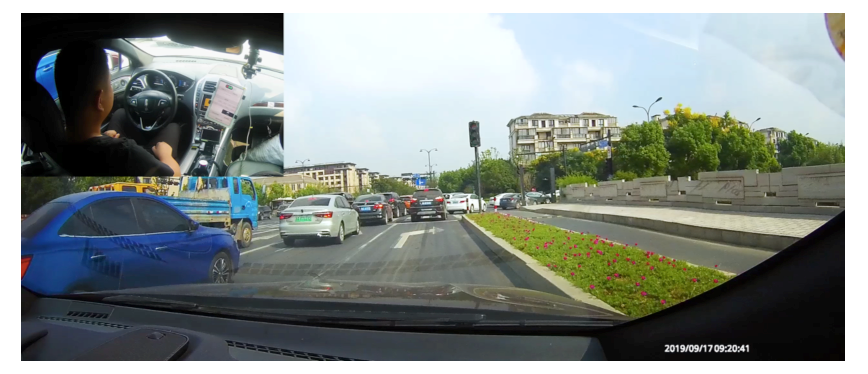
To realize this future, Alibaba has already begun large-scale efforts to implement preliminary research and development through its logistics distributions drivers on public roads throughout China. The data collected has allowed Alibaba to be able to build refined and high granularity data sets on a variety of specific driving scenarios.
Besides this, Alibaba Cloud has also experienced with unmanned logistic vehicles. Among these included a self-driving mailbox that has been test to much success at Shanghai Communications University in China.
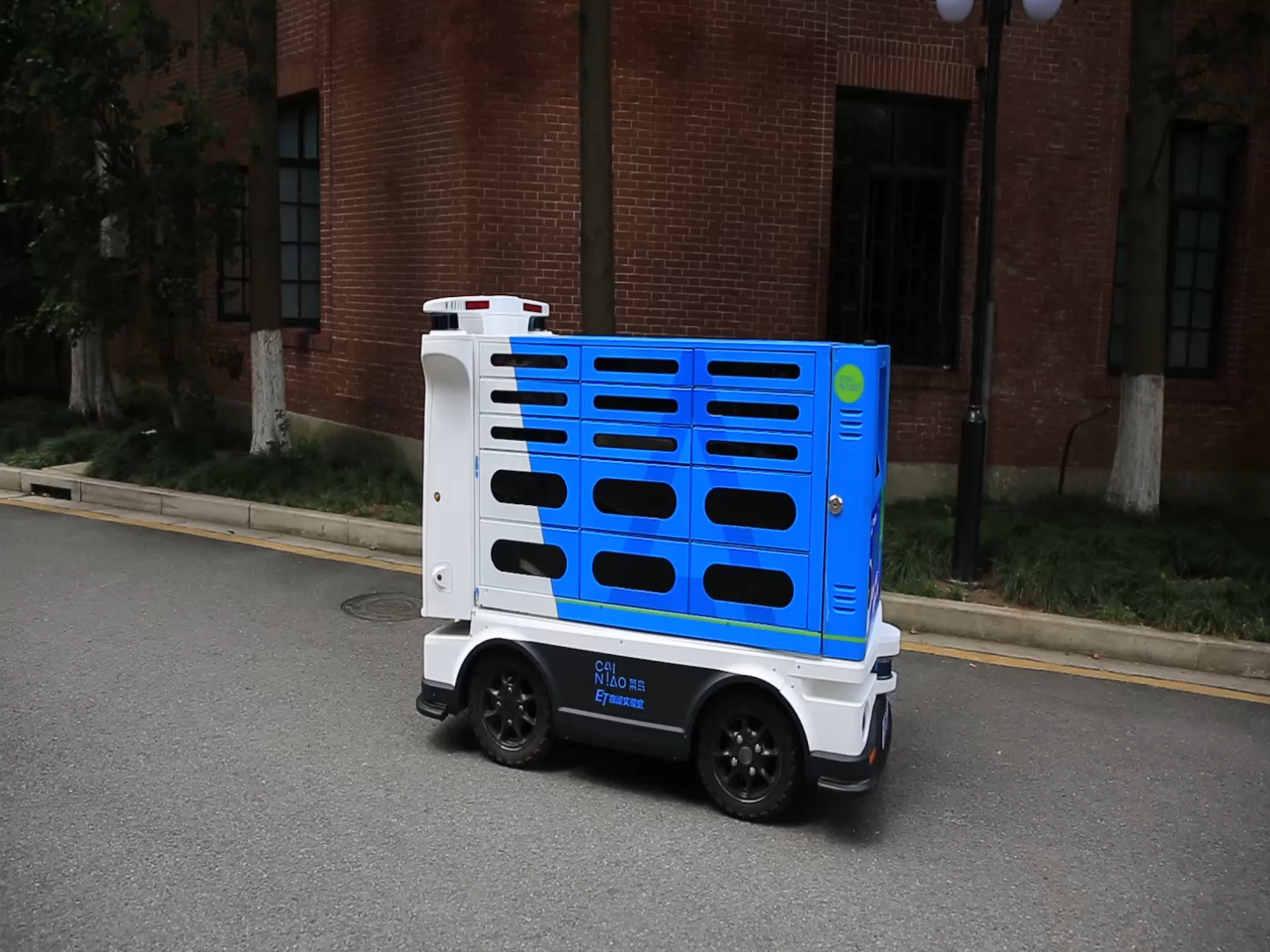
Alibaba developed the AutoDrive Platform for research in autonomous driving. The platform uses a refined scenario database that is data driven and characterized by a high level of granularity. The devised system feeds off of massive amounts of data, which is divided into targeted scenario types. The system uses complex autonomous driving algorithms including perception and detection algorithms developed to target a diverse array of scenarios. Of these include dynamic behavior scenarios, for example, in which NAS is used for 2D recognition and detection for visual application cases.
The AutoDrive Platform along with the Refined Scenario Database has given Alibaba an edge by lowering latency and improving the overall performance of perception and detection algorithms. Even though Autonomous driving still largely remains an area where several large and complex questions still remain. However, these strides points to several amazing possibilities in the imminent future.
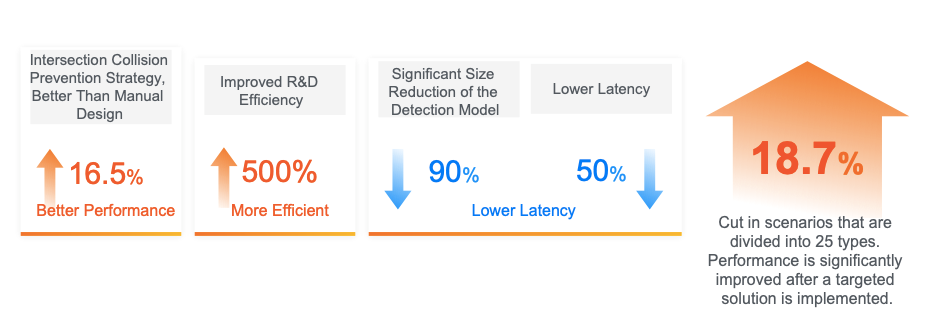
The figure below provides a simple overview of the research and development processes at work. Data from Autonomous driving vehicles as well as data from data collection vehicles is feed into the scenario database at a massive level, well in the exabytes. Data is organized into specific scenario-based systems within the refined scenario database. Next, AutoDrive Platform, which is hosted on Alibaba Cloud, served as the hub for data tagging and management, autonomous driving evaluation, and efficient model training.
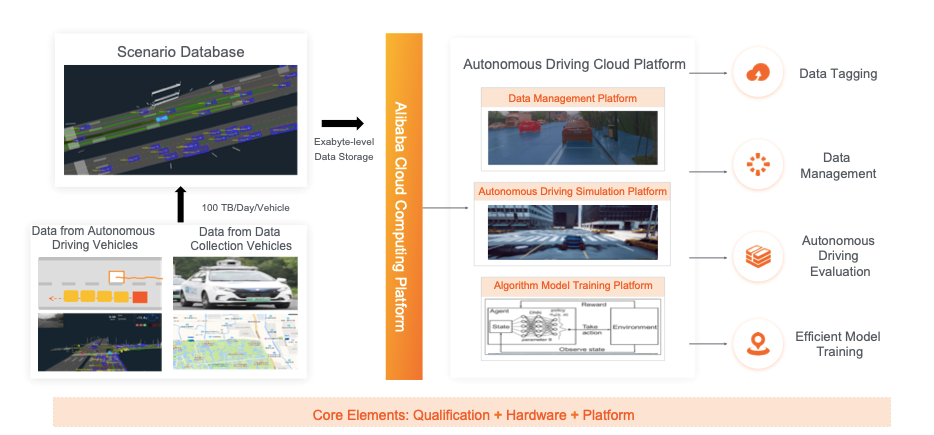
Automatic learning platforms, such as AutoDrive Platform, will play an increasingly important role in autonomous driving. As algorithms improve, the collaborative design of hardware and software will receive more attention. In terms of implementation, level two assisted driving will become more popular, and self-driving vehicles on low-speed private roads are expected to achieve scale in the near future.
Get to know our core technologies and latest product updates from Alibaba's top senior experts on our Tech Show series
How Efficient Can Remote R&D Be? Alibaba Released a New Taobao Mobile Version in Five Days

2,599 posts | 764 followers
FollowAlibaba Cloud Community - July 12, 2022
Alibaba Cloud MaxCompute - March 2, 2020
Alibaba Cloud Community - March 9, 2023
ApsaraDB - October 21, 2020
Alibaba Clouder - October 15, 2018
Alibaba Clouder - April 29, 2020

2,599 posts | 764 followers
Follow Platform For AI
Platform For AI
A platform that provides enterprise-level data modeling services based on machine learning algorithms to quickly meet your needs for data-driven operations.
Learn More MaxCompute
MaxCompute
Conduct large-scale data warehousing with MaxCompute
Learn MoreLearn More
More Posts by Alibaba Clouder